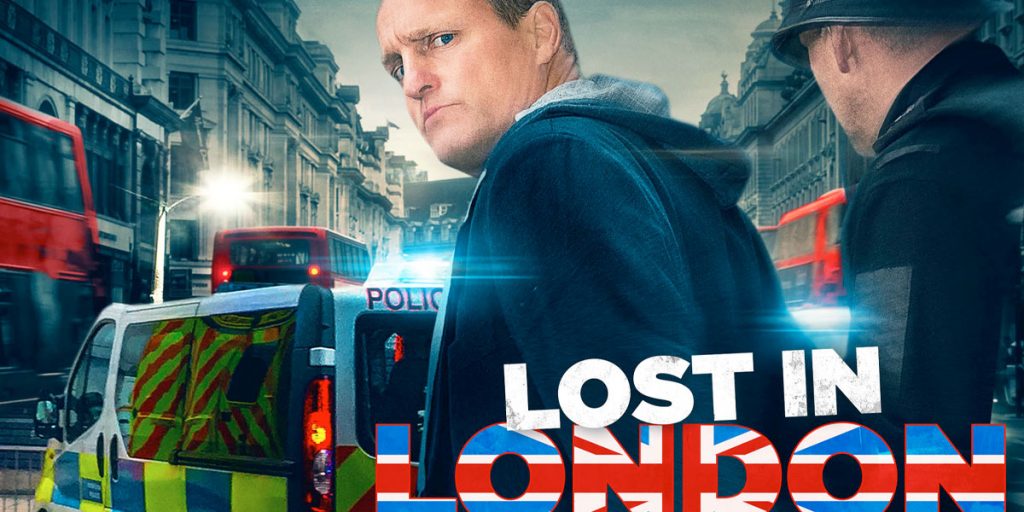Lost in London thrives on the movie’s live broadcast gimmick, but fails to resonate as a “one crazy night” comedy or as a family drama.
Woody Harrelson decided to take on quite an ordeal for his directorial debut: the first film broadcast live in movie theaters as it is being filmed in real time. Not only is it all happening live, but it’s in one shot as well. That the film manages to exist largely free of technical foibles is a testament to Harrelson and cinematographer Nigel Willoughby’s (Downton Abbey) virtuosity. Even knowing the production turned out alright – or else it wouldn’t be seeing streaming release some three years later – there’s still an intrinsic tension to the high wire act of live filmmaking on the fly.
I do wish the film’s actual story lived up to the behind the scenes intrigue. Inspired by Harrelson’s own tabloid shenanigans around the turn of the millennium, Lost in London sees Harrelson play himself out for “one crazy night” in London, as he attempts to prevent his wife from finding out about the tabloid reporting of his sexual escapades. Along the way, he is dragged to a club with an unnamed Arab prince, crosses paths with some famous friends, and runs into law enforcement. It’s not out of sorts with something akin to The Hangover. The format, however, requires some necessary downtime, as Harrelson must travel between various locations without cuts.
One of the film’s greatest joys is Owen Wilson’s cameo. Playing a heightened version of himself, Wilson channels a prickish pseudo-philosopher stoner. Harrelson and Wilson – close in real life – evince an easy, breezy chemistry. Their eventual dissolution into sniping about each other’s careers gives the film a jolt of anarchic life. Wilson’s boyish charms are perhaps always best deployed when they are cut with a bit of acid beneath the surface.

The skill Harrelson shows as a director is not so obviously apparent in his writing. The film is an awkward mix of largely serious family drama, boozy shenanigans, Hollywood naval-gazing, and absurdist stoner comedy touches. The whole thing never coalesces into one cohesive tone or style. Much of the humor arises from a place that is perhaps less acceptable in 2020 than it might have been even three years ago. I wasn’t offended – and much of the humor seems more inclusive than exclusive – but I would not be stunned if some viewers are.
The sad reality is I just was not all that invested in the film’s core story. Would Harrelson survive his night of debauchery and get back to his wife in time to save their marriage? I struggled to care when Harrelson (the character) comes off as such a knucklehead. Lost in London’s dramatic beats never land, so Harrelson’s more emotional moments fail to resonate, though, despite what must’ve been a monumental mental task to both direct and star in a live movie, he’s able to muster significant emotion when the script calls for it.
At the end of the day, Lost in London is a cool achievement and an interesting toe in the water for the hybridization of live theater and the cinema. The technical acumen on display to make this thing work remains impressive. It’s worth noting that the version of the film I saw actually begins with a brief behind-the-scene featurette, as though the film’s producers are acknowledging that the story of the movie’s production is actually more interesting than the story the movie is telling.
Signature Entertainment presents Lost in London on Amazon Prime on 25th September.

